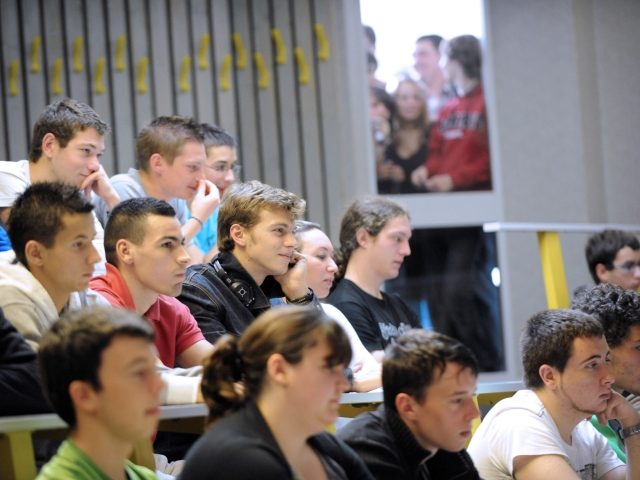Male students are abandoning the pursuit of higher education in such numbers that they are now trailing behind female college students by record levels, according to a report by the Wall Street Journal. At the end of the 2020-21 academic year, women made up 59.5 percent of college students, while men made up 40.5 percent, according to enrollment data from the National Student Clearinghouse.
Moreover, colleges do not want to tackle the issue out of fear that they will be attacked over gender politics, enrollment consultant Jennifer Delahunty told the Wall Street Journal.
The view on college campuses is that “men make more money, men hold higher positions, why should we give them a little shove from high school to college?” Delahunty added.
At the end of the 2020-21 academic year, women made up 59.5 percent of college students, while men made up 40.5 percent, according to enrollment data from the National Student Clearinghouse. This education gap has been slowly widening for 40 years.
Moreover, the divergence increases at graduation. According to the U.S. Department of Education, 65 percent of women in the U.S. who began a four-year degree in 2012 obtained their diplomas by 2018, compared to 59 percent of men during the same time period.
Thomas Mortenson, a senior scholar at the Pell Institute for the Study of Opportunity in Higher Education, said that “men are falling behind remarkably fast,” and noted that white men, for the most part, no longer hold a statistical edge in enrollment rates.
Additionally, enrollment rates for poor and working-class white men are lower than enrollment rates for black, Latino, and Asian men from the same economic backgrounds, reports the Wall Street Journal.
One reason why young men are getting little help is that schools are focused on encouraging historically “underrepresented” students, the report added.
Jerlando Jackson, the Vilas Distinguished Professor of Higher Education at the University of Wisconsin’s School of Education noted that colleges have been unwilling to allocate funds toward addressing male underachievement due to fear of criticism for assisting white men.
“As a country, we don’t have the tools yet to help white men who find themselves needing help,” Jackson said. “To be in a time when there are groups of white men that are falling through the cracks, it’s hard.”
University of Vermont mental-health counselor Keith E. Smith told the Wall Street Journal that when he started working at the school in 2006, he discovered that men were more likely to face consequences for the trouble they caused under the influence of drugs and alcohol.
So in 2008, Smith proposed a men’s center to help male students succeed, but said that his suggestion drew criticism from women who asked, “Why would you give more resources to the most privileged group on campus?” Ultimately, the funding for the men’s center wasn’t appropriated, and it was never built.
According to the executive director at the National Student Clearinghouse Douglas Shapiro, if the trend of low male enrollment rates continues, then in the next few years, two women will earn a college degree for every man.
Meanwhile, Delahunty says, “If you care about our society, one, and two, if you care about women, you have to care about the boys, too.”
“If you have equally educated numbers of men and women that just makes a better society, and it makes it better for women,” she said.
You can follow Alana Mastrangelo on Facebook and Twitter at @ARmastrangelo, and on Instagram.


COMMENTS
Please let us know if you're having issues with commenting.